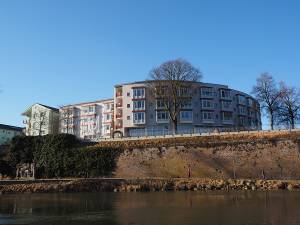For many seniors living on fixed incomes like Social Security government subsidized senior housing is the only option they have to live on their own as opposed to living in a nursing home.
This also means that these seniors must be able to take care of themselves and do not require any outside assistance or supervision and can also qualify for assistance by being able to show that their income levels are low enough to be eligible for subsidized housing.
One of the most popular senior housing programs is the Section 202 program that is administered by HUD whose stated purpose is:
The Section 202 program helps expand the supply of affordable housing with supportive services for the elderly. It provides very low-income elderly with options that allow them to live independently but in an environment that provides support activities such as cleaning, cooking, transportation, etc.
Besides providing interest-free funds to not-for-profit, private entities to help develop affordable housing for senior citizens Section 202 also helps subsidize the rents by paying the difference between the approved rents and the senior’s contribution.
Government Subsidized Senior Housing Qualifications
In order to qualify for this type of senior subsidized housing a household has to have a very low income as well as at least one individual who is 62 years of age or older. These income levels vary by geographic location and the income must be in-line with HUD published guidelines which can be checked on the HUD website.
The actual rent amounts for the HUD Section 202 program are calculated by subtracting any approved medical expenses from the applicant’s income and the person then pays 30 percent of that amount towards their rent and utilities with the program paying the remaining rent due.
Using the government subsidized senior housing is a good solution for any senior living on a low fixed income get the help they need to live out their golden years in a clean, safe environment while still maintaining their dignity by contributing towards their monthly rent payments.
How Government Subsidized Housing Works
The assisted household generally pays 30 percent of income for rent, but the voucher makes up the difference between the household’s contribution and the market rent. In addition, the federal government pays a fee, estimated by the GAO to be about 7 to 8 percent of the rent, to the public housing agency that administers the voucher program locally on HUD’s behalf. Thus, under the voucher program, GAO’s formula for total cost of the program is:
Total Costs = Rents + Administrative Fee
Note that in this formula, rents include contributions by both the federal government and the assisted households.
Under the production programs, such as Section 202, the federal government provides development subsidies for new construction or substantial rehabilitation and frequently also provides rental assistance. State and local governments or private entities may provide additional development subsidies. In Section 202, the federal subsidy is a capital advance, essentially an up-front grant, if the housing remains available for 40 years to the low-income elderly. The subsidies help to lower the rents while also providing additional services and amenities. The Section 202 resident generally pays 30 percent of income toward rent, and the government makes up the difference.
Long Waiting Lists For Subsidized Housing
Waiting lists for Section 202 facilities are long, especially when compared to the number of units becoming vacant each year. The relative dearth of vacancies each year means that applicants frequently wait over two years for a unit. Of facilities reporting in 1999, 83.9 percent reported having waiting lists that are exclusive to their facility. The description of waiting lists in 1999 was similar to that of 1988. The share of projects with no waiting list, an indicator of projects with low demand, increased only slightly, from 7.1 percent in 1988 to 7.8 percent in 1999. Most of these projects are the oldest projects, concentrated in the first phase of the program.

 Households of the very aged renters, who are 80 years and older, comprise about a third of the very low-income elderly renters. Nearly half pay more than 50 percent of their incomes for housing. About one third live in central cities. Nearly two- thirds are women living alone.
Households of the very aged renters, who are 80 years and older, comprise about a third of the very low-income elderly renters. Nearly half pay more than 50 percent of their incomes for housing. About one third live in central cities. Nearly two- thirds are women living alone. Many of our elderly living primarily off of Social Security are in serious need of affordable housing and this is where
Many of our elderly living primarily off of Social Security are in serious need of affordable housing and this is where